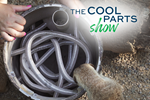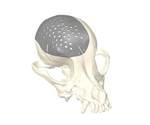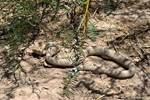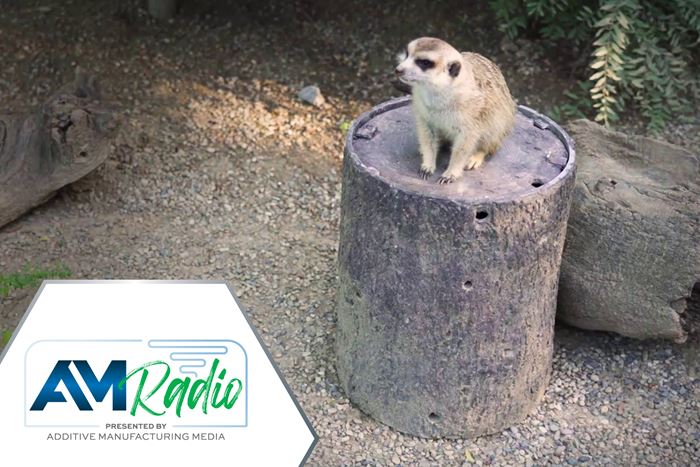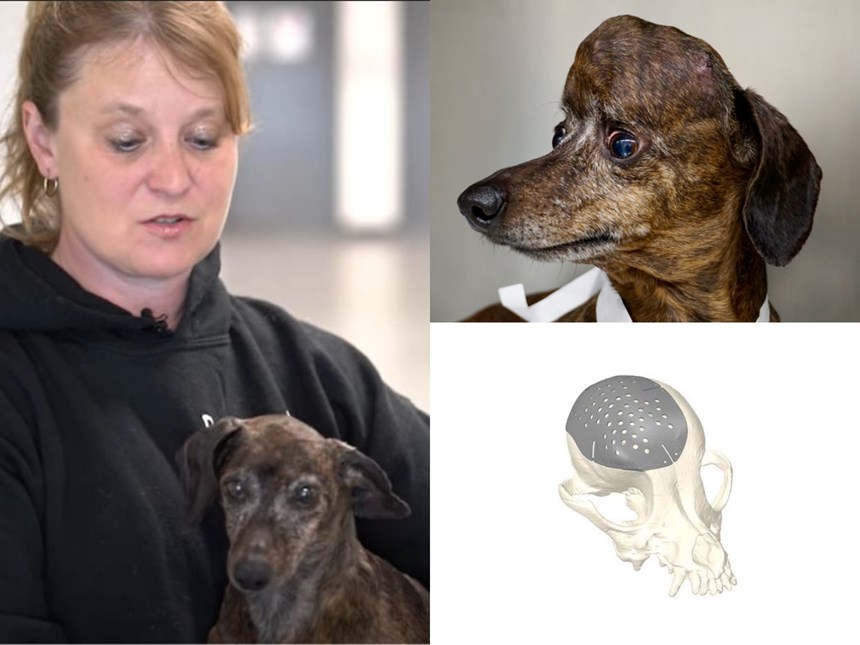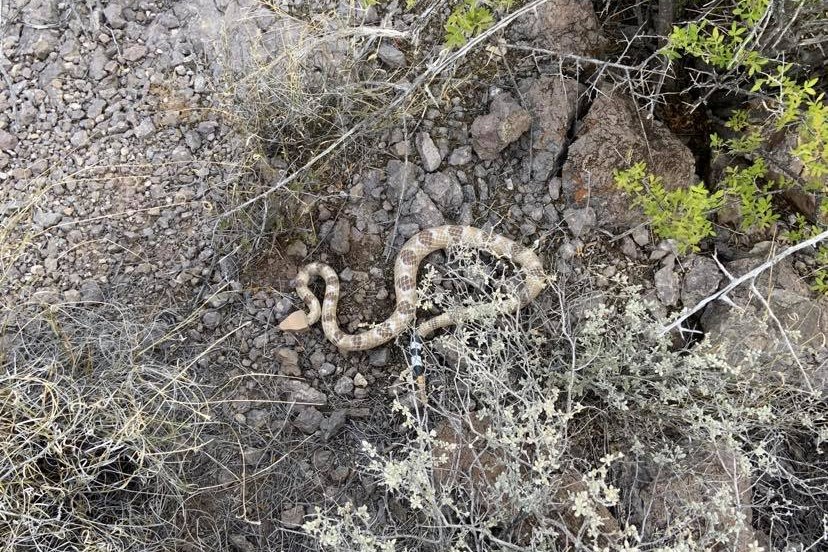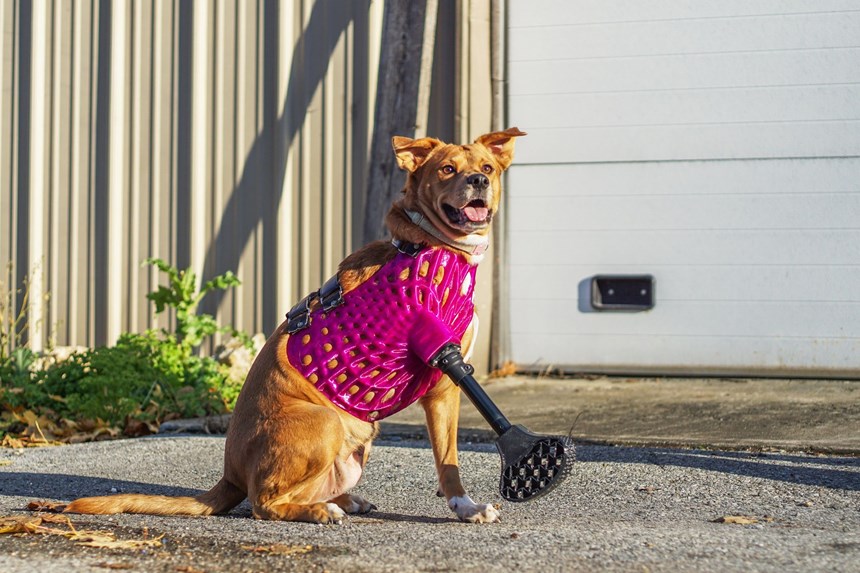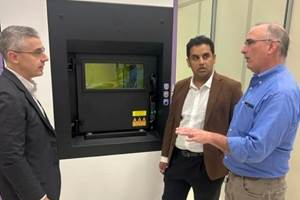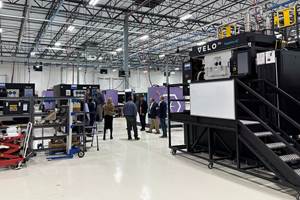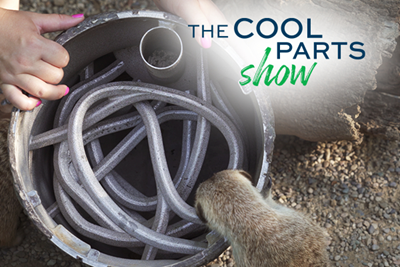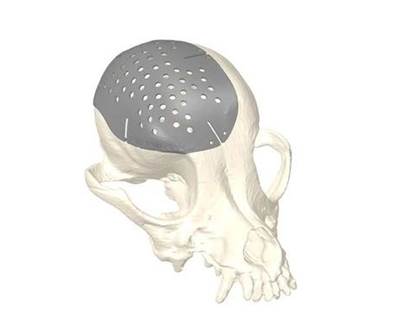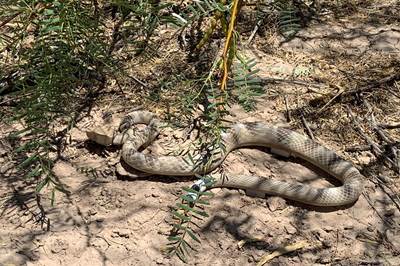The use of 3D printing for tooling and production primarily benefits humans, either directly through medical and consumer applications, or indirectly by improving systems and processes that humans use. But 3D printing is also benefiting animals in a variety of ways, some of which may come to bear on how it will help humans in the future. I discussed five instances of additive manufacturing’s overlap with animals (pets and otherwise) in this week’s episode of the AM Radio podcast.
Learn how these animal-centric applications might advance AM for humans and industry — listen above, and see the images we discussed in this episode in the slideshow below.
Welcome! You’ve unlocked premium content.
The Cool Parts Show
The Cool Parts Show focuses on a cool 3D printed part to explore how it was made and what it reveals about the possibilities of additive manufacturing. Check out the entire series here.
3D Printing helping Animals
Transcript
Julia Hider
This episode of the AM Radio podcast is brought to you by PTXPO a new event for professionals in the plastics industry designed for the entire North American plastics market. The tradeshow will feature machinery, materials and technology solutions throughout pavilioned exhibit halls. Check out the exhibits, attend educational sessions with manufacturing experts, and make new connections in the industry. If your business is involved in plastics processing, moldmaking or additive manufacturing, this is the event for you. Join Additive Manufacturing and sister brands Plastics Technology and Moldmaking Technology for the first-ever PTXPO. The inaugural event takes place March 29 through 31st, 2022, at the Donald E. Stephens Convention Center in Rosemont, Illinois. Find more information about attending exhibiting or sponsoring the event at PlasticsTechnologyExpo.com
Stephanie Hendrixson
Alright, and we're back. So for the second half of the show today, I want to try something new. Julia, I brought with me some photos. And I'm going to ask you to look at these and describe what you see, we're going to talk about each one. Spoiler, these are all photos of animals.
Julia Hider
Stephanie, you suggested this idea for a segment months ago, and the time has finally come to record this segment. And I'm so excited. So let's get into it.
Stephanie Hendrixson
So just going into this segment, I want our listeners to know this is not just about cute animals, we are going to try and tie these images back to industry or 3D printing for humans somehow. But this is just going to be a kind of fun conversation. And we're going to put all of these photos on our Instagram and on our website as well. So you the listeners can follow along here. So without further ado, here is the first thing that I want to talk about. Okay.
Julia Hider
Yes, I know what this is. This is a meerkat. And it's sitting on what I believe to be the feeding device for the meerkat. Basically, it just looks like a like a section of a log or something. But this was on the cool part show. So that's why it looks familiar to me, right?
Stephanie Hendrixson
Yes, exactly. Right. This is a feeding device. The meerkat is kind of sitting on top of it in this photo. And inside of this thing that just kind of looks like a log, there are all of these little tubes, and there's sort of like a funnel in the middle. And so the zookeeper can drop, live crickets into this, this thing and close it up, like it has a lid on the top, and then put it into an animal's enclosure, and the crickets will just basically follow the light and come out in their own time. And it's great enrichment for the meerkats and the other animals that get to use this. So given that you're already sort of familiar with this from the cool part show, what do you think this feeder has to do with industrial manufacturing?
Julia Hider
So yeah, obviously, you said there's, you know, a funnel on the inside, and there are other pathways for the crickets to get out. And so you can't really mill that or drill that, especially given that I think the paths are not straight direct paths to sort of give the crickets, you know, variable time to get out.
Stephanie Hendrixson
Right. Yeah, I guess I'm sort of underselling it. Like, yes, there are these very, like windy little tubes on the inside.
Julia Hider
What process was used to make the enrichment device? I don't remember that from that episode.
Stephanie Hendrixson
Yeah. So this was electron beam melting. So a powder bed process.
Julia Hider
And is it metal or plastic?
Stephanie Hendrixson
It's metal.
Julia Hider
It's metal. It doesn't look like it's metal.
Stephanie Hendrixson
It's titanium, actually.
Julia Hider
Oh, is there a reason that it had to be titanium?
Stephanie Hendrixson
They chose titanium one because this was made by GE Additive — a specific part of GE Additive. And they're good at aerospace parts, many of which are made with titanium. But that was a good choice for this device, because it's pretty large. And so they needed something that was going to be lightweight enough for the keepers to be able to move around. And also durable enough for whatever animals might encounter it. But they also needed to be able to clean it. And we've seen that titanium gets used in a lot of medical applications. And so if it's safe enough for humans, it's also safe enough for animals.
Julia Hider
Ah, that makes sense.
Stephanie Hendrixson
Okay, so I kind of wanted to start with this one, one, because I thought you might already be familiar with it. And to this is sort of the thing that got me thinking about this interaction, because it seemed so weird, at first that you would 3D print a device like this, but the more that I got to talk to the folks at GE additive and the people at the zoo, it started to kind of make sense. So I want to move on to our next few animals.
Julia Hider
They're getting, they're going to get more difficult as they go along?
Stephanie Hendrixson
They're going to be less familiar to you. I think there's at least one more in here that you'll know about. And then some of these others are going to be surprises like like this one. Okay, so here we go.
Julia Hider
Okay, so this is a cat. It's, uh, you know, black and white cat. Very cute. It, it looks like it's either eating or drinking something out of a bowl. But it also has what it looks like is a cast or some sort of splint on its front leg. So I'm guessing that the splint or cast is the 3D printed thing that we're looking at here.
Stephanie Hendrixson
Yes, absolutely. So this is Sprocket the cat. Sprocket was attacked by a dog and he suffered some bad nerve damage in his leg that you see there. There was a moment where like the vet thought they might have to amputate and the owner—
Julia Hider
Aw, tripod kitty!
Stephanie Hendrixson
Yeah. But his owner was kind of into 3D printing and worked with the vet to make this temporary support brace. So they printed it using a Formlabs printer and it's designed — you'll see like his foot is sticking out at the end there. It's designed to let blood floated to the leg to help with healing but also to encourage Sprocket to keep using it so it wouldn't atrophy during the healing process.
Julia Hider
And is this like a permanent thing that he'll have to wear for the rest of his life or is it just a temporary thing to help him as he heals?
Stephanie Hendrixson
Right, so it's intended as a temporary thing just to help him as he heals so he can keep using his leg. The blood can keep flowing and he won't need an amputation.
Julia Hider
Oh, I'm very glad that you know, that's helping Sprocket. He's very cute.
Stephanie Hendrixson
Um, but I think like this connects to an issue that humans often have, like, I don't know, have you ever broken a bone?
Julia Hider
I have. I broke my wrist when I was, I guess I was in kindergarten. So…
Stephanie Hendrixson
And how, how were you treated for that?
Julia Hider
I had a hot pink cast on my arm.
Stephanie Hendrixson
And was it comfortable? Was it fun?
Julia Hider
Oh, no, you know, I remember we were going to SeaWorld. There's a water park at SeaWorld. And I had to have you know, a bag on my arm over the cast on vacation at SeaWorld. So yeah, not fun.
Stephanie Hendrixson
So like looking at this brace that Sprocket has there like some open areas in it, and it's made out of plastic. And there are some other companies that are kind of doing similar things. Now for humans. There's one called active armor where you can get a custom cast printed for you. And it's just plastic. It's got like holes throughout it. So it's airy, it's breathable.
Julia Hider
Yeah, definitely. That's definitely another thing about having a cast. Not super sanitary feeling sometimes and you know, the itching and…
Stephanie Hendrixson
Yeah, so I thought Sprockets case was sort of an interesting example of how like a brace that's helping animals has a direct correlation to something that we can now do for humans, you know, Sprocket’s, not going to go to the waterpark, but a person with a cast might.
Julia Hider
I don’t think Sprocket would enjoy the waterpark, but but lots of other benefits there for Sprocket as well.
Stephanie Hendrixson
Alright, so this next one, I'm going to send to you the before and after first, and then there's a missing piece that you won't see in the images. But I'll show that to you next. All right, so you should have just got to two photos.
Julia Hider
Oh, my gosh. Okay, so it's a very, very small dog. I don't I don't know what kind of dog this is. But it's a small dog. It's a
Stephanie Hendrixson
It’s a Dachshund.
Julia Hider
Oh, my God.
Julia Hider
I love them. So yeah, a small dog, sort of black and white mixed fur, and he's being held by someone in the first picture. But in the second picture, it looks like he has some sort of head injury, is that what's going on?
Stephanie Hendrixson
Yeah, so this is Patches. And she is believed to be the first dog in North America to receive a custom cranial implant. What you're seeing in that second picture is she had a tumor on top of her head. And so to remove the tumor, the surgeons, were gonna have to remove like 70% of her skull, like this is gonna be a really major surgery. And so there are ways that vets and human surgeons also can cover a hole in your skull or like reinforce it, but they're sort of tricky. And there's a lot of hand work that has to happen in surgery, which is not the most safe and best thing for healing and for long term. And so rather than go through the conventional methods, the surgeon who was going to do this surgery, was aware of a researcher at a university who was working on a workflow to make implants like that. So I will send you another image that is the actual implant that they made the cranial plate,
Julia Hider
Okay. Oh, Dachshund skulls look really weird. But yeah.
Stephanie Hendrixson
And so it's like a pretty big yeah, pretty big plate that they had to make. And like, the added challenge here is every dog is a different size, every breed their skull is shaped a little bit differently, every individual animal is a little bit different. And so trying to make a custom implant like this can be really challenging. And like just dealing with the data turns out to be kind of the bottleneck. So like, you need to do a CT scan, but then you're gonna end up with like way more information than you actually need. And so a surgeon needs to sort of go through and like filter out the data they actually want and maybe do like some surgery planning, like mark up what parts of the skull are going to be removed, and then work with somebody who knows manufacturing to actually design what the implant should look like. This is an example of that workflow. I'm not sure how long it actually took. But there are researchers who have been working on paring that process down to about three weeks, which is which is pretty fast, compared to what Patches may have experienced.
Julia Hider
So yeah, what's the implant made out of and what process was used?
Stephanie Hendrixson
I believe it's titanium and it was 3D printed on a Renishaw SLM selective laser melting machine. This is kind of another case where very similar challenges and things like this are happening for humans as well. So we did a different episode of The Cool Parts Show on a custom scapula implant. It was exactly the same workflow, like starting with the CT data and paring it down to just like what the scapula looks like and then designing around that again, that process I think took maybe two or three weeks. But there are also companies that are working on ways of automating that and trying to get it even faster so that the design piece is no longer the bottleneck to producing these things. Alright, Julia. So this next one is going to challenge the definition of cute animals, maybe. Okay, I guess depending on on what you personally consider to be cute. And this is another one that I think you may already be familiar with.
Julia Hider
Okay, yes, I am familiar with this one. This is a 3D printed rattlesnake, right?
Stephanie Hendrixson
Yes, it is. Okay. Yes. Is it cute?
Julia Hider
Um, I don't have an issue with snakes.
Stephanie Hendrixson
So what do you know about this snake? This printed snake.
Julia Hider
So the the researcher who made the snake was studying predators of the snake?
Stephanie Hendrixson
Yes.
Julia Hider
Okay. So yes, they were studying predators. And they wanted models of a rattlesnake that they could set up in the desert, and then train cameras on it so they could see what animals are coming to try and eat the rattlesnake.
Stephanie Hendrixson
So yeah, so how were they making these previously?
Julia Hider
They were sculpting them out of clay. But that was melting in the hot desert heat.
Stephanie Hendrixson
Yeah, it was like deforming. And so they wanted a better way of making these models. And maybe you know, something where you wouldn't have to start from scratch every time. And so this is research from a biologist at the University of Texas, El Paso, and she started working with the 3D printing lab on campus to come up with a printable rattlesnake. I think it's it's made in a couple of parts and assembled together, but it's made out of PLA material that can hold up to the the really high temperatures out in the desert. So something I think is interesting about this and relevant to a lot of industrial applications that we see is that this was not like a thing that was made from scratch. Like this is sort of a reverse engineered rattlesnake. Yeah. So they had like a museum sample that they 3D scan. Yeah, to get the design of this and then printed it and it still had to be painted like finished by hand. Yeah, the painting on it is amazing. Yeah. And I think the process they had to go through is probably familiar to a lot of our listeners and the people that we write about, because there are so many cases where a piece of equipment breaks down and there's like this one piece that's no longer made, like there's no supplier for it anymore. And so you end up doing stuff just like these researchers did, where you're, you're scanning it and trying to like reverse engineer the model and then feeding it into a 3D printer.
Julia Hider
I never thought of this as an example of reverse engineering, but you're totally right.
Stephanie Hendrixson
Alright, so I have one last photo for you today.
Julia Hider
Oh my gosh. Okay. So it's a very cute, happy looking dog. But the dog only has three legs, but it has sort of a prosthetic leg on with a device that straps around it.
Stephanie Hendrixson
Yes. So this dog's name is Eve, Eve was hit by a car when she was about six months old. So her front leg, her right front leg there was amputated. So what she's wearing in this picture, this is a full limb prosthetics. So she has like the whole prosthetic leg, and then she's wearing this pink jacket. And that's sort of how the prosthetic attaches to her body. This was created by a company called Dive Design along with Bionic Pets. You know, here, again, like we talked about with Patches, like every animal's body is different. So it's hard to standardize things like prosthetics and orthotics. And it's also can be difficult to make things like that the way that they have conventionally been made. So if you're a human who needs a prosthetic, your clinician is probably going to do something like take a cast of your limb and build something by hand. But dogs are wiggly and not super into that whole process. So the ability to do things like maybe 3D scan the dog instead, and then convert that into a file for 3D printing can be a much simpler, easier way to make devices like this.
Julia Hider
It's interesting, because a lot of times you just see dogs or cats that just have three legs, you know?
Stephanie Hendrixson
Yeah. And they actually, I mean, a lot of them get around pretty well and they can adapt to it. It does start to become an issue like when animals start to age like they might have arthritis. And so like if there have been like years of compensating for a missing limb like that can cause problems. So prosthetics and things like this can be can be useful.
Julia Hider
I just love how happy she looks with her prosthetic device.
Stephanie Hendrixson
Yeah, and you can find like videos of her on on Instagram and like running around she's very happy dog with this. And just like we talked about, kind of with the implants like this is another area prosthetics and orthotics where things have been really manual. There have been like a lot of steps involved into getting custom devices, which is what you need for these solutions to work well. And we're seeing a similar trend kind of play out for humans. So I've written about a company called additive America that 3D prints lots of prosthetics and and sockets and things like this. We just recently did a contest for The Cool Parts Show and we got several different entries that had to do with orthotic devices like school doses sprays a socket for a prosthetic leg. And so this is kind of a really neat parallel to me where these problems have existed side by side in humans and in animals and now 3D printing is able to provide solutions for
Julia Hider
both and I love that we can learn just from looking at pictures of cute animals.
Stephanie Hendrixson
Alright, so I think we'll wrap it up there. Again, you can see all of these photos we'll post them on Instagram we are @AddMfgMedia and also on our website, AdditiveManufacturing.Media. You can find links to that and everything that we talked about in the show notes as well. If you liked the show, leave us a rating leave us a review or tell a friend and thank you for listening.
Julia Hider
This episode of AM Radio was recorded with help from Austin Grogan and Kade Nicholson. This show was edited by Alex Lytle, Stephanie Hendrixson and Troy Brewer. Our artwork is by Kate Bilberry. AM Radio and Additive Manufacturing Media are products of Gardner Business Media located in Cincinnati, Ohio. I'm Julia Hider. Thanks for listening
Related Content
New Zeda Additive Manufacturing Factory in Ohio Will Serve Medical, Military and Aerospace Production
Site providing laser powder bed fusion as well as machining and other postprocessing will open in late 2023, and will employ over 100. Chief technology officer Greg Morris sees economic and personnel advantages of serving different markets from a single AM facility.
Read MoreZeda AM Production Plant in Ohio Now Open — Thoughts on the New Facility
73,000-square-foot metal powder bed fusion plant includes extensive machining capability plus separate operational models for serving medical versus other businesses.
Read MoreDurable, Waterproof 3D Printed Casts: The Cool Parts Show #58
Recovering from an injury with an ActivArmor cast means that patients can exercise, bathe and live life while they heal. We get a firsthand look at the solution in this episode of The Cool Parts Show.
Read MoreActivArmor Casts and Splints Are Shifting to Point-of-Care 3D Printing
ActivArmor offers individualized, 3D printed casts and splints for various diagnoses. The company is in the process of shifting to point-of-care printing and aims to promote positive healing outcomes and improved hygienics with customized support devices.
Read MoreRead Next
3D Printed Animal Enrichment Device: The Cool Parts Show #22
The Cool Parts Show goes to the zoo to learn about a 3D printed enrichment device being used to challenge and engage meerkats, birds, foxes and more in this bonus episode.
Read MoreWorkflow Is Key to Delivering Custom 3D Printed Implants for Animals
A veterinary study on the use of 3D printed titanium cranial plates for dogs has established a workflow for creating these custom devices in less than 3 weeks.
Read More3D Printed Snakes Reveal Unseen Desert Wildlife (Includes Video)
At the University of Texas El Paso, a biology researcher teams up with a manufacturing technology instructor to produce rattlesnake models realistic enough to draw predators.
Read More

.jpg;width=70;height=70;mode=crop)
